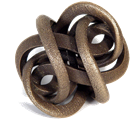X:1
T:Braes of Bushbie [2], The
M:C|
L:1/16
R:Strathspey
B:John Bowie - "A Collection of Strathspey Reels and Country Dances &c." (c. 1789, p. 5)
F:
https://tunearch.org/w/index.php?title=Braes_of_Bushbie_(2)&action=formedit
Z:AK/Fiddler's Companion
K:Gdor
V:1
F2|DG3G3A B3AG3F|CF3F3G A2c2{B}A2(GF)|G3AB3c {Bc}d3cBd3|cBAG F3A B2(G2G2):|
A2|B3cd2B2 f2B2d2B2|A2c2f2d2 c2A2F2A2|B3cd2B2 f2B2d2B2|cA3F3A B2G2G2:|
|:f2|g4 d3g (d2ga) b3g|f4 c2f2 (c2fg) a3f|g4 dg3 d3cBd3|cBAG F3A B3GG2:|
A2|Bd3GB3 G2Bc d2B2|Ac3FA3 F2AB c2A2|Bd3GB3 G2Bc d2B2|cA3F3A B2G2G2A2|
Bd3GB3 G2Bc d2B2|Ac3FA3 F2AB c2A2|B3dfb3 fd3B2d2|cBAG F3A B2G2G2||
V:2 clef = bass
z2|z4 G,4G,4G,4|z4 F,4F,4F,4|z4G,4G,4G,4|F,4F,4G,4z2:|
|:z2|B,4B,4B,4B,4|F,4F,4F,4F,4|B,,4B,,4B,,4B,,4|F,4F,4G,4z2:|
|:z2|B,4B,4G,4G,4|A,4A,4F,4F,4|B,4B,4B,4G,4|A,4F,4G,4z2:|
z2|G,4G,4[G,4B,4][G,4G,4]|F,4[F,4C4]F,4F,4|G,4G,4[G,4B,4][G,4B,4]|F,4F,4G,4z4|
G,4G,4[G,4B,4][G,4G,4]|F,4[F,4C4]F,4F,4|B,4B,4B,4B,4|F,4F,4G,4G,,2||
BRAES OF BUSHBIE [2]. AKA – "Breeze of Busbey (The)," "Braes of Busbie." AKA and see "Duke of Sutherland's March." Scottish, Slow March (4/4 time) or Strathspey. A Dorian (Aird, O'Farrell): G Minor (Cole, Hardie): G Dorian (Cranford). Standard tuning (fiddle). ABC (Cole, Hardy): AABBCC (O'Farrell): ABABCCD (Howe): AABBCCD (Cranford). In lowland Scots dialect, a brae is a hillside. Busby is a district in Renfrewshire, Scotland. The melody was composed by John Bowie, and first appears in his Collection of Strathspey Reels and Country Dances &c. (c. 1789). A note in Nathaniel Gow's Sixth Collection (1822) says that it was favorite of Niel Gow's, and that it is "Old".
In Ireland, Co. Leitrim piper and fiddler biography:Stephen Grier entered the tune, set as a reel, in Book 2 of his c. 1883 music manuscript collection as "Breeze of Busbey." Reworked as "Dowd's Favorite (1)," the reel was famously recorded by Sligo/New York City fiddler Michael Coleman. Piper Willie Clancy had a reel time setting of the tune, called "Braes of Busby," in a major tonality.
Additional notes
Source for notated version : - Cape Breton strathspey setting is from fiddler Bill Lamey via Jerry Holland (Inverness, Cape Breton) [Cranford]; McFadyen's Repository (1795) [Henderson].
Printed sources : - Aird (Selection of Scotch, English, Irish and Foreign Airs, vol. 6), 1803; No. 91, p. 35. John Bowie (A Collection of Strathspey Reels and Country Dances &c.), c. 1789; p. 5.
Cole (1000 Fiddle Tunes), 1940; p. 128.
Cranford (Jerry Holland's Collection of Fiddle Tunes), 1995; No. 187, p. 53.
Gow (Sixth Collection of Strathspeys, Reels and Slow Tunes), 1822; p. 27.
Hardie (Caledonian Companion), 1992; p. 85.
Henderson (Flowers of Scottish Melody), 1935; no. 21, p. 8.
Howe (1000 Jigs and Reels), c. 1867; p. 134.
McFadyen (Repository of Scots and Irish Airs, vol. 2), c. 1800; p. 22.
O'Farrell (Pocket Companion, vol. 2), c. 1806; p. 140 (appears as "Braes of Busbie").
Ryan's Mammoth Collection, 1883; p. 167 (strathspey setting).
Jean White (100 Popular Hornpipes, Reels, Jigs and Country Dances), Boston, 1880; p. 21.
Recorded sources : - Alia Vox AVSA 9878, Jordi Savall - "The Celtic Viol. II" (2010).
Jerry O'Sullivan – "O'Sullivan meets O'Farrell" (2005).
Back to Braes of Bushbie (2)

